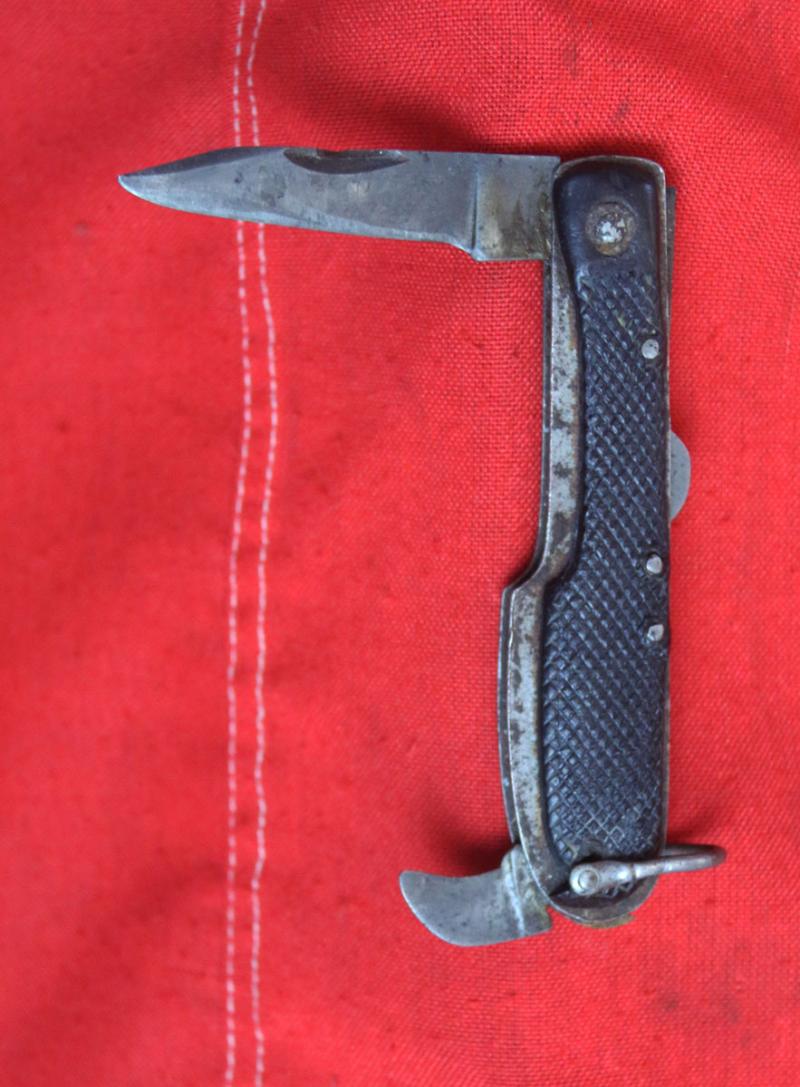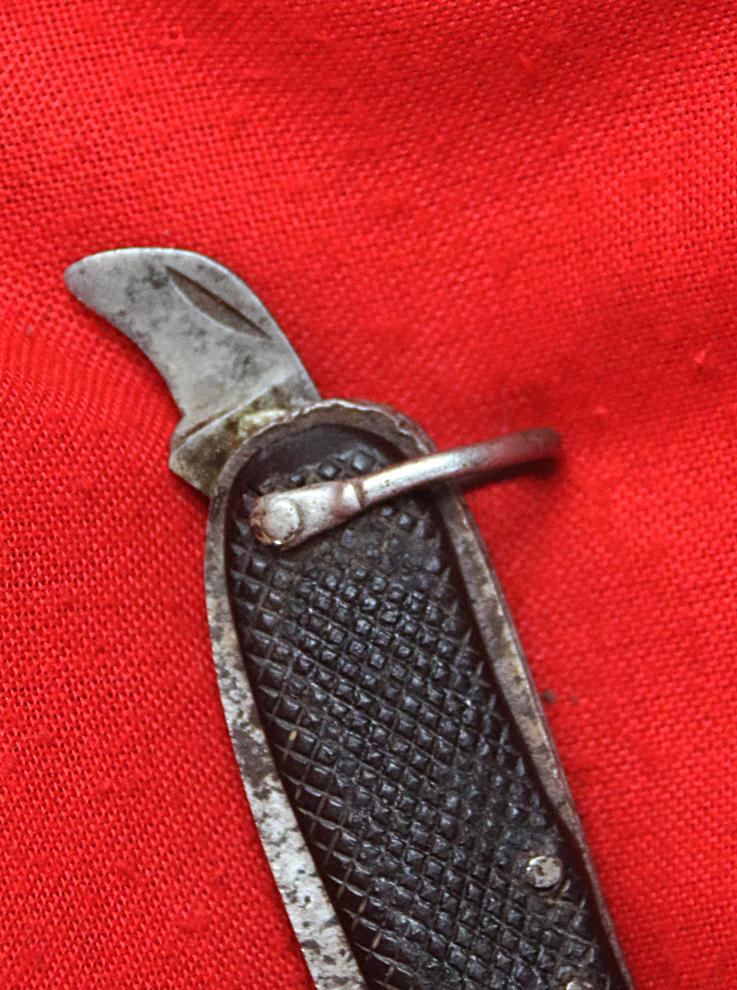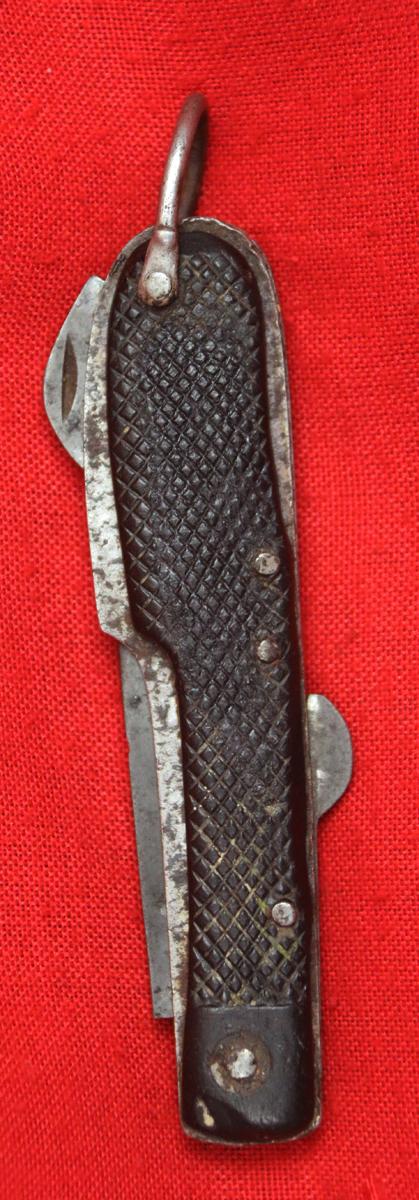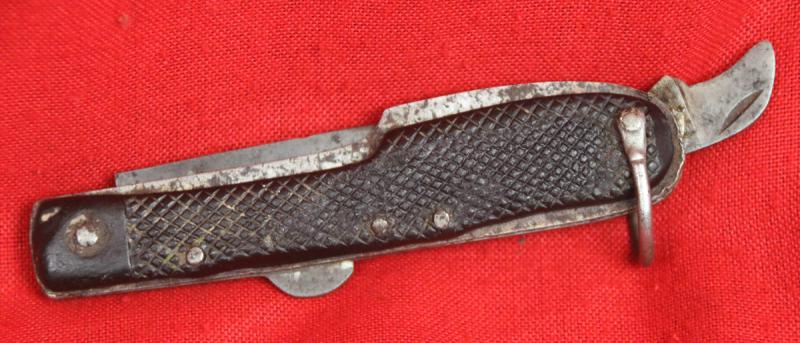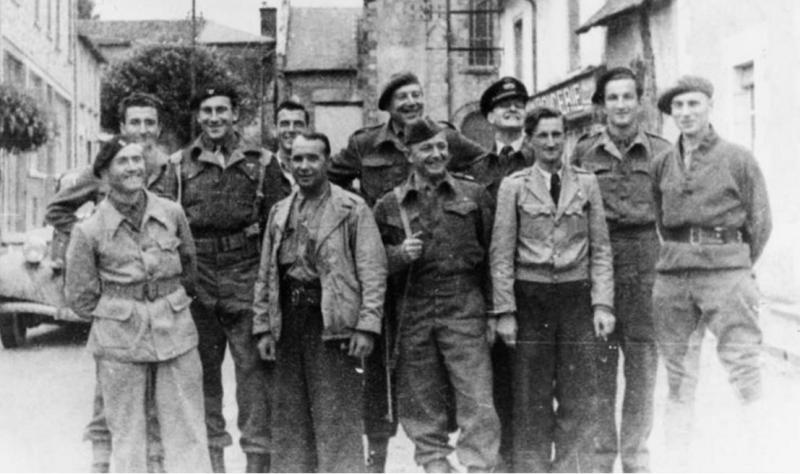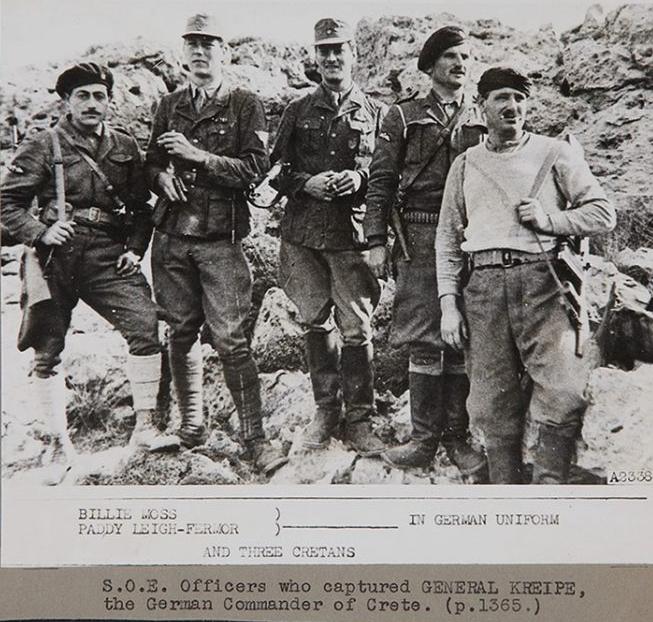A Most Rare Original SOE/OSS Issue, Special Operations Executive Agent's Folding Espionage and Sabotage Clasp Knife With Tyre Slasher
Clipped back blade, subsidiary tyre slasher hooked blade, chequered Bakelite two-piece grips with integral black bolster. See pages 46 and 47 British and Commonwealth Military Knives by Ron Flook.
.S.O.E. operatives had a wide range of equipment to help survive in enemy territory. Specialist jump-suits and personal escape and survival packs were developed by S.O.E.'s own factories.
Agents were carefully prepared for missions. Detailed briefings gave the latest information on the countries and specific locations where they were operating. Cover stories, contact addresses, personal codes and escape routes were provided. S.O.E. s paramilitary teams were given money, food and special military stores to meet individual needs
..
This was the knife issued to agents, intially in order to cut the shroud of the parachute, but from thenceforth as a universal espionage knife blade. The second blade is a sabotage tyre slasher.
The Special Operations Executive (SOE) was a secret British World War II organisation. It was officially formed on 22 July 1940 under Minister of Economic Warfare Hugh Dalton, from the amalgamation of three existing secret organisations. Its purpose was to conduct espionage, sabotage and reconnaissance in occupied Europe (and later, also in occupied Southeast Asia) against the Axis powers, and to aid local resistance movements.
Few people were aware of SOE's existence. Those who were part of it or liaised with it were sometimes referred to as the "Baker Street Irregulars", after the location of its London headquarters. It was also known as "Churchill's Secret Army" or the "Ministry of Ungentlemanly Warfare". Its various branches, and sometimes the organisation as a whole, were concealed for security purposes behind names such as the "Joint Technical Board" or the "Inter-Service Research Bureau", or fictitious branches of the Air Ministry, Admiralty or War Office.
SOE operated in all territories occupied or attacked by the Axis forces, except where demarcation lines were agreed upon with Britain's principal Allies (the United States and the Soviet Union). It also made use of neutral territory on occasion or made plans and preparations in case neutral countries were attacked by the Axis. The organisation directly employed or controlled more than 13,000 people, about 3,200 of whom were women.
After the war, the organisation was officially dissolved on 15 January 1946. The official memorial to all those who served in the SOE during the Second World War was unveiled on 13 February 1996 on the wall of the west cloister of Westminster Abbey by Queen Elizabeth The Queen Mother. A further memorial to SOE's agents was unveiled in October 2009 on the Albert Embankment in London.3 The Valençay SOE Memorial honours 104 SOE agents who lost their lives while working in France. The Tempsford Memorial was unveiled on 3 December 2013 by Charles, Prince of Wales, in Church End, Tempsford in Bedfordshire, close to the site of former RAF Tempsford.
On 5 May 1941 Georges Bégué (1911–1993), a radio operator, became the first SOE agent parachuted into German-occupied France. The American, Virginia Hall, who arrived by boat in August 1941, was the first woman to serve for a lengthy period in France. Andrée Borrel (1919–1944) and Lise de Baissac (1905–2004) became the first women parachuted into France on 24 September 1942. A typical team of a network consisted of an organiser (leader), a radio operator, and a courier. Agents performed a variety of functions including arms and sabotage instructors, couriers, liaison officers and radio operators. Between Bégué's first drop in May 1941 and August 1944, more than 400 F Section agents were sent into occupied France. RF sent about the same number of agents; AMF sent 600 (although not all of these belonged to SOE). EU/P and DF sent a few dozen agents each.125
Some networks were compromised, with the loss of many agents. In particular agents continued to be sent to the "Prosper" network headed by Francis Suttill for months after it was controlled by the Germans and most of its agents had been captured.126 The head of F Section, Maurice Buckmaster was blamed by many as he failed to see signs that the network was compromised
4 3/4 Inches folded, naturally in combat service used condition, entirely as to be expected, yet the grip plates are very good indeed. Considering their service, almost every of the very few examples we have seen in the past 50 years, in or outside of museum collections, have had considerable damage and losses in this area. This example is also the rarest type, as the type produced in greater numbers, had nickel grip plate bolsters
Code: 24672
Price
on
Request

